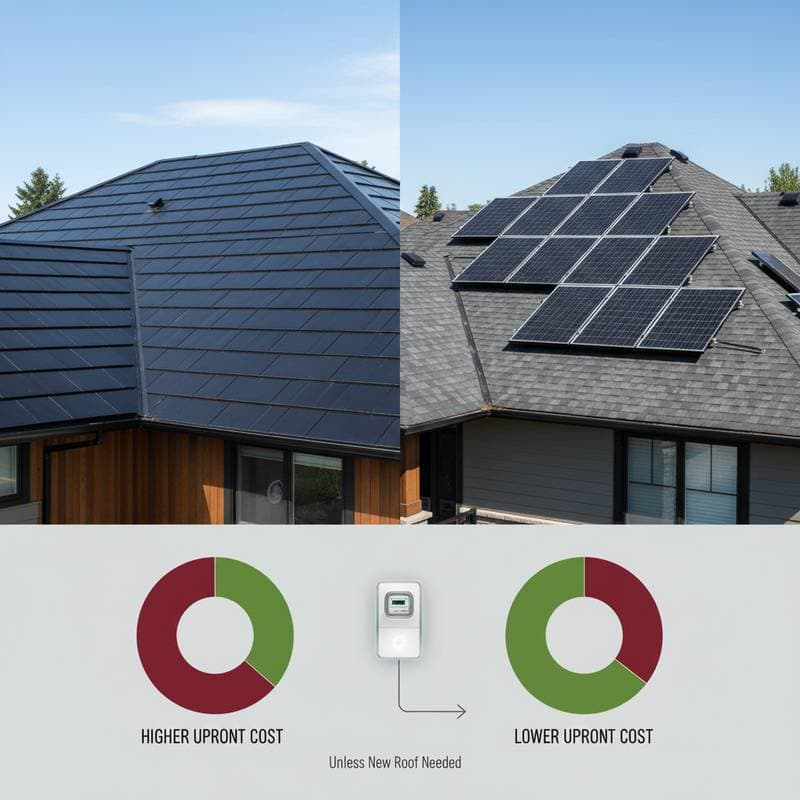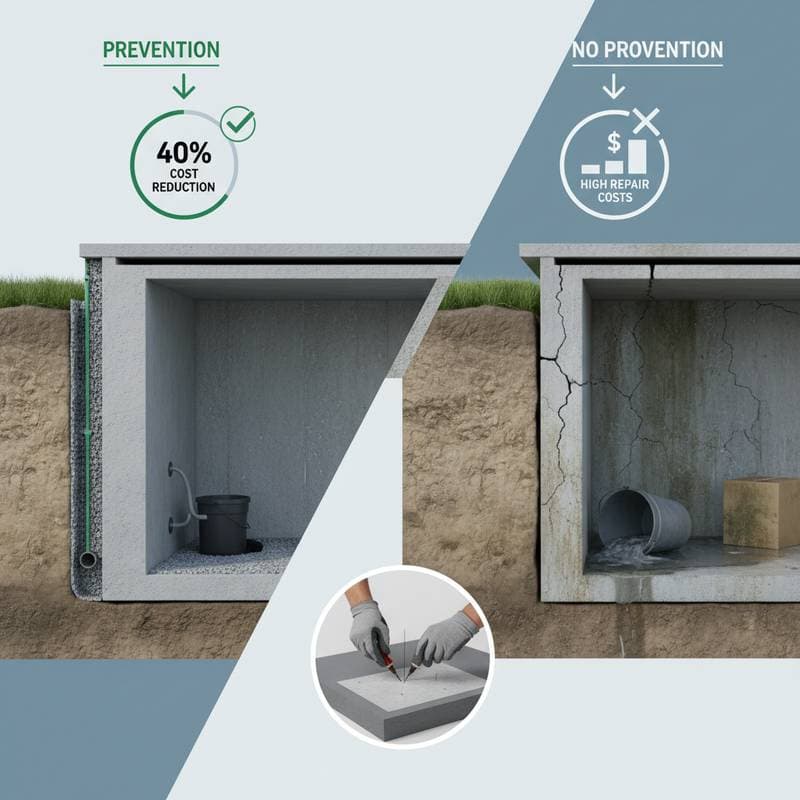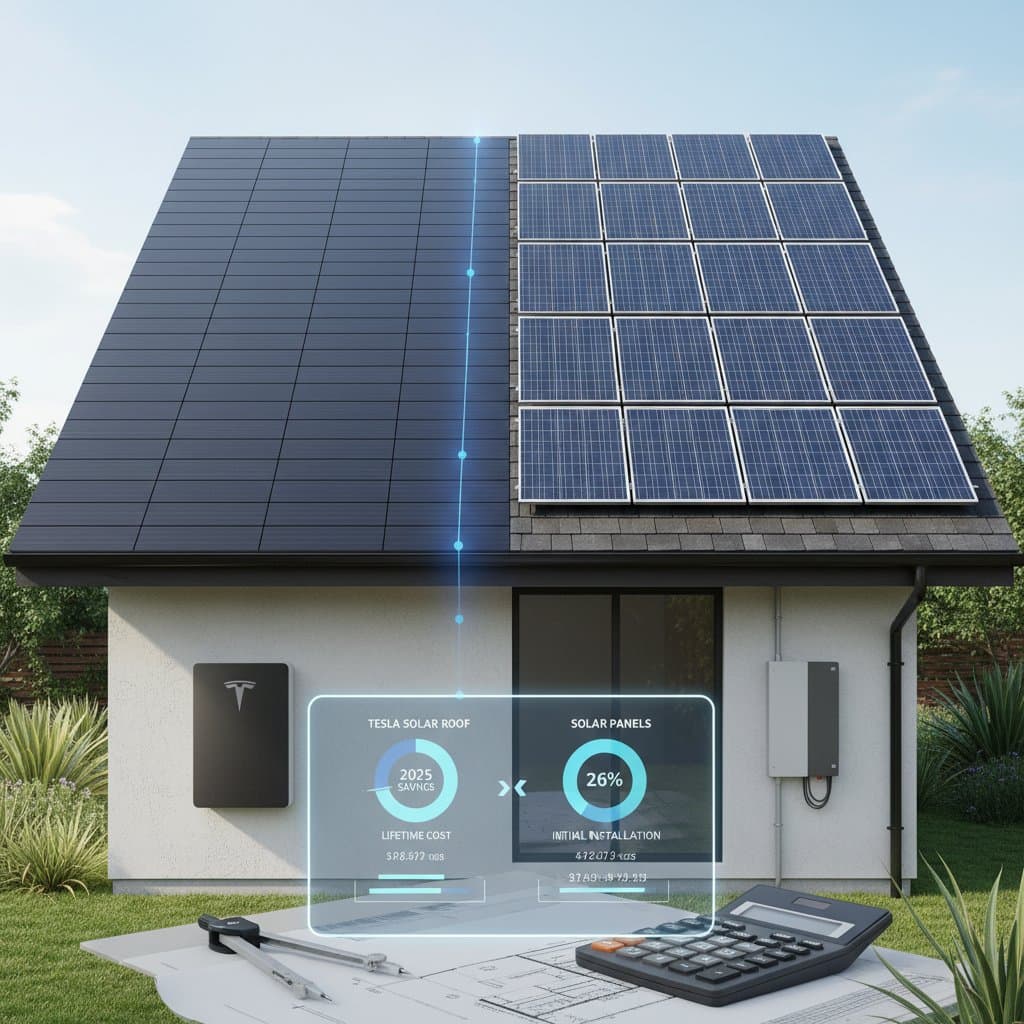Solar Roof Costs: Tesla Tiles vs Panels Breakdown
A solar roof transforms home appearance and electricity expenses. Homeowners often compare Tesla Solar Roof tiles with traditional solar panels to determine the better choice. Both options convert sunlight into energy, yet they vary in cost, installation demands, and enduring value. Grasping these distinctions enables informed decisions prior to contract commitments.
The Quick Answer: Cost Comparison at a Glance
Traditional solar panels typically cost between 2.50 and 4.00 dollars per watt when installed, influenced by brand, roof type, and local labor rates. Tesla Solar Roof tiles range from 6.00 to 10.00 dollars per watt, with this figure encompassing a complete roof replacement. When an existing roof requires replacement, Tesla tiles alter the financial equation substantially, as they function as both roofing and solar energy producers.
| Option | Average Installed Cost per Watt | Typical Roof Size | Total Project Range | Best Fit |
|---|---|---|---|---|
| Tesla Solar Roof Tiles | 6.00 to 10.00 | 2,000 sq ft | 60,000 to 120,000 | Full roof replacement, aesthetics matter |
| Traditional Solar Panels | 2.50 to 4.00 | 2,000 sq ft | 15,000 to 30,000 | Existing good roof, budget-focused |
The upfront price difference appears substantial, yet cost represents only part of the narrative. Examining installation specifics, lifespan, and efficiency clarifies the selection process.
How Tesla Solar Roof Tiles Work
Tesla Solar Roof tiles substitute conventional shingles with tempered glass tiles embedded with photovoltaic cells. Each tile spans approximately 15 inches by 45 inches, blending active solar tiles with inactive ones for uniform coverage. The setup integrates with a Tesla Powerwall or comparable battery storage, enabling energy retention for evening consumption.
Advantages of Tesla Solar Tiles
- Integrated Design: Absence of protruding panels yields a streamlined, cohesive appearance.
- Durability: Tiles achieve Class A fire resistance, Class F wind resistance, and Class 3 hail impact ratings, enduring severe weather without extra supports.
- Longevity: Tiles endure 25 to 30 years, aligning with premium roofing standards.
- Warranty Integration: Unified coverage for roof and solar elements simplifies administration.
Drawbacks of Tesla Solar Tiles
- High Upfront Cost: Incentives notwithstanding, the starting investment exceeds that of panels considerably.
- Limited Installer Network: Exclusivity to Tesla-certified professionals impacts timelines and geographic access.
- Complex Installation: Roof overhaul extends beyond basic panel mounting, particularly on multifaceted structures with dormers.
How Traditional Solar Panels Work
Standard solar panels affix atop existing roofs via aluminum racking. Photovoltaic cells within panels transform sunlight into electricity, routed through an inverter to supply the home or export surplus to the grid.
Advantages of Solar Panels
- Lower Initial Cost: Full systems install at a fraction of tile expenses.
- Wider Availability: Numerous qualified electricians and contractors reduce labor fees.
- Easier Maintenance: Faulty panels replace independently without roof disturbance.
- Flexible Options: Selections include monocrystalline, polycrystalline, or thin-film variants to match budget and output needs.
Drawbacks of Solar Panels
- Aesthetic Impact: Elevated panels alter roof visuals unappealingly for some.
- Roof Penetrations: Brackets pierce roofing, risking leaks absent meticulous sealing.
- Limited Roof Life Match: Roof renewal in a decade necessitates panel removal and reinstallation, incurring extra charges.
Efficiency and Energy Production
Efficiency gauges energy yield per square foot. Tesla tiles attain 14 to 18 percent efficiency, whereas premium panels reach 20 to 22 percent. This variance implies panels produce greater electricity from equivalent sunlight exposure.
Space-constrained roofs favor panels for superior output. Expansive, angled roofs benefit from tiles, which cover comprehensively without conspicuous intervals, harmonizing form and function.
Installation Requirements
Roof Structure and Angle
Assess roof pitch and direction pre-installation. Tiles excel on 14 to 60-degree inclines, while panels adjust via racks for peak solar capture. South-facing roofs optimize yields in most areas; east or west facings yield robust performance nonetheless.
Electrical and Structural Upgrades
Both necessitate a contemporary electrical panel, usually 200 amps or higher. Outdated wiring demands 1,000 to 3,000 dollars in enhancements. Structural reviews verify roof framing supports added weight, essential for aged residences.
Installation Timeframes
Tesla Solar Roof projects span 2 to 3 weeks, covering demolition and renewal. Panel installations conclude in 2 to 5 days post-permits. For urgency, panels prevail.
Cost Breakdown by Category
| Cost Element | Tesla Solar Roof | Traditional Panels |
|---|---|---|
| Roofing Material | Included | 5,000 to 15,000 if replaced separately |
| Solar Hardware | Included in total | 10,000 to 20,000 |
| Labor | 15,000 to 30,000 | 5,000 to 10,000 |
| Electrical Upgrades | 1,000 to 3,000 | 1,000 to 3,000 |
| Maintenance Over Life | 2,000 to 5,000 | 1,000 to 2,000 |
Integrating roofing and solar into one solution renders Tesla tiles viable for impending re-roofing plans.
Accessibility and Safety Considerations
- Roof Access: Tiles form slick surfaces; professionals handle all upkeep.
- Fire Safety: Both attain Class A ratings, the pinnacle standard.
- Weight Load: Panels impose 3 to 4 pounds per square foot; tiles 5 to 6 pounds. Verify rafter capacity.
- Electrical Isolation: Grounding and disconnects comply with National Electrical Code standards.
DIY or Professional Installation
Experienced individuals with electrical knowledge may partially DIY panels, adhering to permits. Pre-assembled kits ease assembly, yet licensed electricians finalize grid ties.
Tesla Solar Roofs demand certified Tesla teams exclusively, as tiles fuse roofing and electrics. Unauthorized efforts nullify warranties and invite hazards.
Common Mistakes to Avoid
- Ignoring Roof Condition: Panels on deteriorating roofs escalate future expenses via removal and reinstallation. Renew roofs under ten years remaining first.
- Underestimating Shading: Obstructions like trees or structures diminish output by 10 to 30 percent. Evaluate shade trajectories beforehand.
- Skipping Permits: Local codes mandate electrical and structural approvals. Omissions hinder grid ties or rebate eligibility.
- Overlooking Battery Storage Costs: Powerwall equivalents cost 8,000 to 12,000 dollars, fostering energy autonomy.
- Poor System Sizing: Track monthly kilowatt-hour usage, averaging 700 to 1,000 for homes. Target 6 to 8 kilowatt systems accordingly.
Long-Term Value and Maintenance
Tiles demand scant maintenance, free of exposed hardware. Annual soft-water cleaning sustains efficiency. Panels require similar cleansing, plus bracket checks and inverter swaps after 10 to 15 years.
Yearly professional inspections secure connections and module integrity. Many providers bundle these in service plans.
Selecting the Right System for Your Home
Opt for panels on recent roofs seeking swift returns at minimal expense. Choose tiles for aging roofs prioritizing seamless aesthetics and integration. Evaluate your priorities to align investment with needs.
Steps to Launch Your Solar Project
Consult certified installers for site assessments. Review incentives like federal tax credits to offset costs. Secure quotes comparing total ownership expenses, then proceed with the system enhancing your home's efficiency and value.





